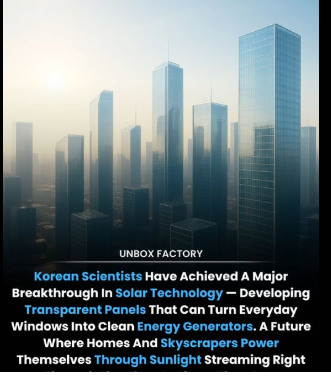Biofuel
Biofuels from non-food sources
Advanced biofuels are a type of biofuel produced from non-food sources such as algae, woody biomass, agricultural waste, and other non-edible plant matter.
Here are some examples of advanced biofuels and their potential benefits:
Algae-based biofuels: Algae can be grown in wastewater or on non-arable land, and can be used to produce biofuels such as biodiesel and bioethanol. Algae-based biofuels have the potential to be more sustainable and have a smaller carbon footprint than traditional biofuels.
Cellulosic biofuels: Cellulosic biofuels are produced from non-edible plant matter, such as switchgrass, corn stover, and forestry residues. These biofuels have the potential to be more sustainable than first-generation biofuels because they do not compete with food crops for land and resources.
Waste-based biofuels: Waste-based biofuels are produced from various waste streams, such as municipal solid waste, sewage sludge, and food waste. These biofuels have the potential to be a more sustainable alternative to landfilling waste, while also producing renewable energy.
Biogas: Biogas is produced by the anaerobic digestion of organic matter, such as agricultural waste, food waste, and animal manure. Biogas can be used as a transportation fuel or can be converted to bio-methane and injected into natural gas pipelines.
Bio-based diesel: Bio-based diesel can be produced from various non-food sources such as algae, animal fats, and used cooking oil. It has the potential to be a more sustainable alternative to petroleum-based diesel.
Advanced biofuels from non-food sources have the potential to be a more sustainable and renewable source of energy than traditional biofuels.
They can help reduce greenhouse gas emissions, promote sustainable agriculture, and create economic opportunities for rural communities. As research and development continue, advanced biofuels have the potential to play an increasingly important role in the transition to a more sustainable energy system.
Non-food sources Advantages
Non-food sources of biofuels have several advantages over traditional biofuels made from food crops.
Some of these advantages include:
Sustainability: Non-food sources of biofuels are more sustainable than traditional biofuels because they do not compete with food production. This reduces the potential for food shortages and high food prices.
Availability: Non-food sources of biofuels are abundant and widely available. They can be found in waste products, marginal land, and other non-food sources.
Energy security: Using non-food sources of biofuels can enhance energy security by reducing dependence on foreign oil.
Greenhouse gas emissions: Biofuels made from non-food sources have the potential to reduce greenhouse gas emissions and mitigate climate change.
Job creation: The production of non-food biofuels can create jobs in rural areas and contribute to local economic development.
Despite these advantages, there are also some challenges associated with non-food sources of biofuels. For example, the production of biofuels from non-food sources can be more expensive and less efficient than traditional biofuels. In addition, the production process can require large amounts of water, energy, and other resources, which can be environmentally damaging if not properly managed.
To overcome these challenges, ongoing research is being conducted to improve the efficiency and sustainability of biofuels made from non-food sources. This includes the development of new technologies for converting non-food sources into biofuels, as well as efforts to optimize production processes and reduce environmental impacts.
The production of biofuels from non-food sources
The production of biofuels from non-food sources involves several steps, including feedstock selection, conversion, and purification.
Here are some of the basic steps involved in the production of biofuels from non-food sources:
Feedstock selection: The first step in producing biofuels from non-food sources is selecting the appropriate feedstock. This may include algae, cellulose, waste oils and fats, grasses, and non-food crops such as switchgrass, miscanthus, and jatropha. The choice of feedstock depends on factors such as availability, cost, and suitability for the desired biofuel.
Conversion: Once the feedstock has been selected, it needs to be converted into a biofuel. This can be done using various methods such as fermentation, gasification, and pyrolysis. For example, cellulose can be converted into bioethanol through a process called enzymatic hydrolysis, which breaks down the cellulose into simple sugars that can be fermented into ethanol.
Purification: After the biofuel has been produced, it needs to be purified to remove impurities and contaminants. This may involve distillation, filtration, or other separation techniques. The purified biofuel can then be used directly or blended with other fuels to meet specific requirements.
Distribution and use: Finally, the biofuel needs to be distributed and used. This may involve transporting the fuel to a distribution center, filling stations, or other points of use. Biofuels can be used in a variety of applications, including transportation, heating, and electricity generation.
The production of biofuels from non-food sources is still in its early stages, and there is ongoing research to improve the efficiency and sustainability of the process.
Some of the challenges associated with the production of biofuels from non-food sources include the cost and complexity of the production process, the need for large amounts of water and energy, and the potential for negative environmental impacts if not properly managed. However, with continued research and development, biofuels from non-food sources have the potential to provide a sustainable and renewable source of energy for the future.
Conclusion for Advanced biofuels from non-food sources
Advanced biofuels from non-food sources have the potential to provide a sustainable and renewable source of energy that does not compete with food production.
Non-food sources of biofuels include algae, cellulose, waste oils and fats, grasses, and non-food crops, and they have several advantages over traditional biofuels made from food crops.
These advantages include sustainability, availability, energy security, reduced greenhouse gas emissions, and job creation. However, there are also challenges associated with the production of biofuels from non-food sources, such as cost and complexity, resource requirements, and potential environmental impacts. Ongoing research and development are needed to improve the efficiency and sustainability of the process and to address these challenges. Overall, advanced biofuels from non-food sources hold great promise for the future of renewable energy and a more sustainable world.
https://www.exaputra.com/2023/04/advanced-biofuels-from-non-food-sources.html
Renewable Energy
Educating for Peace
 What this really means is teaching kids that:
What this really means is teaching kids that:
All human beings, rich or poor, black or white, gay or straight, have equal value.
The people who have had the privilege to see the Earth from space are uniformly shocked, usually moved to tears, to see that all the lines and boundaries that define our geopolitical world do not really exist; they are constructs of the uber-wealthy who profit from division and war.
I would love to see Maria Montessori’s dream come true. Yet, as a realist, living in the United States, I see the enormity of the challenge we face here.
Renewable Energy
Did January 6th Really Happen, or Was it a Hoax, as Trump Wants You to Believe?
 If I had told you ten years ago that one man would rise to power in the United States who would have such a command over the American people that he could make up any lie he wanted to — and it would be broadly recognized as true — would you have believed me?
If I had told you ten years ago that one man would rise to power in the United States who would have such a command over the American people that he could make up any lie he wanted to — and it would be broadly recognized as true — would you have believed me?
Anyone would have bet $100 against a dime that this was impossible. Yet here we are, in a land where Trump can literally rewrite history, just by opening his mouth.
Did January 6th Really Happen, or Was it a Hoax, as Trump Wants You to Believe?
Renewable Energy
Transparent Solar PV
 This is theoretically possible; it transmits visible light and uses other frequencies (ultra-violet and infrared) to knock electrons out of the substrate. But it means higher costs and lower efficiencies. Of zero practical value at this point.
This is theoretically possible; it transmits visible light and uses other frequencies (ultra-violet and infrared) to knock electrons out of the substrate. But it means higher costs and lower efficiencies. Of zero practical value at this point.
-
Climate Change2 years ago
Spanish-language misinformation on renewable energy spreads online, report shows
-
Climate Change3 months ago
Guest post: Why China is still building new coal – and when it might stop
-
Climate Change Videos2 years ago
The toxic gas flares fuelling Nigeria’s climate change – BBC News
-

 Greenhouse Gases1 year ago
Greenhouse Gases1 year ago嘉宾来稿:满足中国增长的用电需求 光伏加储能“比新建煤电更实惠”
-
Greenhouse Gases3 months ago
Guest post: Why China is still building new coal – and when it might stop
-

 Climate Change1 year ago
Climate Change1 year ago嘉宾来稿:满足中国增长的用电需求 光伏加储能“比新建煤电更实惠”
-

 Carbon Footprint2 years ago
Carbon Footprint2 years agoUS SEC’s Climate Disclosure Rules Spur Renewed Interest in Carbon Credits
-
Renewable Energy4 months ago
US Grid Strain, Possible Allete Sale





